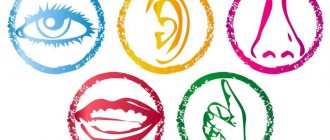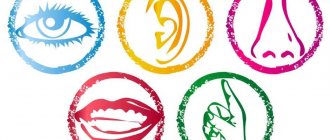What it is
Stereotyping began to be considered in the 20s of the twentieth century. Stereotypical thinking is characterized as a narrow paradigm that is stored in the head to save effort required when perceiving certain complex situations and phenomena. Researchers have identified two reasons for the formation of such patterns: the economy of the mind and the desire to preserve the values of a particular group.
This kind of standardization has the following characteristic features:
- sustainability;
- selectivity;
- emotional basis.
Simply put, people use stereotypes so as not to bother themselves with additional thinking. When they manage to find confirmation of their thoughts in the behavior of others, they become even more convinced of the truth of their own or collective conclusions. Stereotyping is a certain replacement for mental activity.
To one degree or another, each of us is subject to such beliefs, with the only difference being that some truly firmly believe in such “postulates,” while others are able to question them.
Various kinds of prejudices influence a person’s worldview, his behavior and encourage a distorted vision of reality. Patterns can be imposed by society or arise based on personal observations. The former are more harmful, since they impose an incorrect way of thinking on the individual and do not allow him to analyze the situation objectively and independently.
But still, without stereotyping, society could not exist. It allows consciousness to build important patterns:
- water may wet;
- it's cold in winter;
- the flame burns.
Knowing this, we do not need to verify our assumptions in practice every time. However, there are stereotypes that affect a person’s consciousness and subconscious, preventing him from living.
You should learn to distinguish prejudices from the real state of affairs. The same concept can be dictated by the internal motivations of an individual or imposed on it by society. In the second case, the individual feels a conflict between his interests and what public opinion requires of him. The desire to follow stereotypes imposed from the outside distorts the vision of the real.
Often we judge others not by their actions, but by what others say about them. For example, a person who occasionally attends church may assume all the characteristics of a real Christian, although in fact this is not the case at all.
What is a stereotype?
A stereotype is an assessment of an object or phenomenon that has been established for a long time, prevailing in the public consciousness and forming a biased attitude towards this object or phenomenon.
The tendency to create stereotypes and believe them is common to all people. It was formed in us evolutionarily, since the brain has always sought to save energy spent on mental activity. He simplifies the picture of the world, tries to make unfamiliar things understandable, explaining them with simple and familiar phenomena.
Stereotypes are a form of accumulated experience, ready-made thinking patterns that allow you to quickly draw conclusions and make decisions. Some of them are inherent in instincts at the genetic level (for example, the belief that you need to be wary of people with certain appearance features). But the main part of stereotypes is laid down during upbringing and in the process of communication.
Most existing stereotypes are irrelevant or meaningless. Instead of protecting us from potential dangers and aggressors, they noticeably distort reality, giving it a negative connotation.
Stereotyping effect
This is the process of the emergence of a stable belief or image, when, based on one’s own or social practice, a person fixes in the mind some picture of the world.
When encountering a previously unknown phenomenon, the brain begins to analyze the situation and look for something familiar in it. The resulting settings compare a new object with a similar group, which allows you to quickly classify data and, if necessary, retrieve it from memory.
How did the term come about?
The word "stereotype" is borrowed from the Greek language and is translated as "hard imprint." Initially, this term was used to refer to a monolithic printing form (cliché), invented in the 18th century and significantly expanding the capabilities of printing. By analogy with the typographic stereotype, the thinking stereotype was also named, since it also represents a cliché.
In 1922, at the suggestion of the writer Walter Lippmann, the term “social stereotype” appeared. It implies a stable image related to a certain social group and attributed to all its representatives. Modern psychology, trying to explain what a stereotype is, calls this phenomenon a protective mechanism that allows the brain to simplify the surrounding reality and quickly make “safe” decisions.
American philosopher Hilary Putnam studied the peculiarities of communication between representatives of certain professions and identified certain features related to social stereotypes. This is how representatives of one profession communicate using professional jargon, using specific words, jokes and metaphors that are incomprehensible to representatives of other professions.
Features of stereotypical thinking
Thinking in patterns means not logically justifying information when receiving different experiences, but comparing what is happening with what has already been deposited in the mind. Thus, the world becomes safer for the mind, since it is subject to a certain order.
Psychologist Daria Milai
Make an appointment
Stereotypes can be formed from childhood. These are beliefs, values, norms, reactions, assessments that a child absorbs from adults. When the mind is subject to stereotyping, it interferes with the full and comprehensive development of the personality. Independence and objectivity of views disappear.
Patterned behavior is most often encouraged by society. In other words, when a person lives like everyone else, he does not strive to show individuality - it is so simple, calm and comfortable.
Prejudices allow you to act “automatically” and prevent you from looking at the situation from a different angle. Stereotypical processes presuppose the presence of an attitude: to act only this way and not otherwise. Someone whose behavior is determined by stable patterns has a hard time accepting new things, treating them with distrust and even aggression, since unknown information disrupts internal balance and comfort. He has a specific, proven model of action, and he follows it.
Where do stereotypes come from?
Stereotypes existed in the thinking of our ancestors long before the emergence of civilization. So the primitive man had an understanding that his big muscular brother was dangerous because he could take his food, clothes or woman. And today, tens of thousands of years later, this primitive stereotype is triggered when meeting a stranger of the same appearance.
The early people's tendency to be wary of strangers was justified. The good-natured and naive quickly died, so we are all descendants of those who fought back against strangers. And today, many people tend to look with caution at those who look different: have a different skin color, have dyed their hair a variegated color, or dare to get a tattoo. Other means dangerous! And the older a person is, the more afraid he is of people who seem strange to him.
Advantages and disadvantages
Pros:
- automatic thinking, which helps in everyday matters;
- the ability to group objects and phenomena, facilitating the thought process;
- “pass” to one or another group of society.
Minuses:
- lack of freedom of thought and action;
- development slowdown;
- patterning prevents you from accepting new things and learning;
- the occurrence of errors when the situation is not similar to the usual one, and the individual cannot move away from a stable image;
- gullibility, inability to conduct a critical analysis.
Types of stereotypes in psychology
- Patterns of perception.
- Ethnic.
- Gender.
- Age.
- Social.
- Attitudes in communication.
- Heterostereotypes.
Stereotyping can be superficial or deep. In the first case, we are talking about beliefs formed by an unfounded assessment of various external characteristics: the emotionality of Italians, the perfectionism of Germans, the laziness of Russians. As a rule, they change due to the development of mankind.
A deeper version of patterning involves patterns of behavior and thinking that are transmitted between people over years or even centuries. For example, many consider the balalaika, matryoshka, vodka and bears to be essential elements of the Russian tradition.
Face-to-face consultation
What are the features and advantages of face-to-face consultation?
Find out more
Skype consultation
What are the features and benefits of Skype consultations?
Find out more
They are formed under the influence of certain historical events.
Examples of popular stereotypes in society:
- it is impossible to achieve success in a career without “pull”;
- a man never cries;
- children are dependent, helpless;
- Jews are a mercantile people;
- a woman on a ship is a bad omen;
- the higher the price, the better the quality of the product;
- You cannot live with dignity without higher education.
It is believed that the girl is weak, passive and frivolous. She is often perceived as an “appendage” of a man. To compensate for her natural inferiority, she must strive to look more beautiful than everyone else and cunningly capture a rich and attractive husband. Then you need to give birth to children and live off your patron. A lady does not need to be strong or occupy high positions. Otherwise she will feel unhappy.
Representatives of the male sex have also acquired their own stereotypes. There is a common belief that a priori are the main ones in a relationship. Another illusion is that every guy loves football, is obsessed with sex, and they are also terrible womanizers. “All men cheat!” – you’ve probably heard this statement more than once.
Parents are convinced that children should meet their expectations. All teenagers are considered difficult, and their dreams and plans are not taken seriously, attributing their impulses and ideas to “youthful maximalism.” Middle-aged people are in a state of crisis. Old people are sick and unhappy. Young people think only about entertainment and do not respect their elders. Unemployed people are losers, and happiness is impossible without a huge bank account. Not believing in God is madness. Society is replete with stereotypes about what is “good” and what is “bad”, what a “normal” person should be, how and where one can obtain the “correct” knowledge. However, most of them are associated with fears, complexes, weakening of analytical thinking and are not supported by logic.
How are stereotypes formed?
The mechanism for forming attitudes is complex. They cannot appear at once. It takes time, experience, a sequence of certain situations and circumstances.
Stereotypes are always formed in society, a group of people united by common characteristics. For example, in a team of people of a certain profession, some attitudes may work, but in another environment they will not work.
When meeting a person of a certain status, age, profession, we expect specific behavioral reactions from him. For example, we feel a desire to help our grandmother carry her bags because we are sure of her weakness.
If we are told that we are about to meet with a 70-year-old woman whom we have never seen, then we already imagine her image. Reality can disappoint us. An energetic and active lady who can hardly be called old will come to the meeting. But our experience helped our consciousness form a false idea about a stranger.
Stereotypes are a set of rules and norms; they are often erroneous and incorrect. But they are the ones who lead a person. We put a label on a person without seeing or knowing his face, character, or abilities. It is convenient for us to perceive the world as we presented it. I don’t want to give up the generated pictures. After all, then you will have to break the system, act differently, that is, leave your comfort zone.
Stereotypes can be formed due to lack of information. If our consciousness lacks knowledge, we try to fill in the problems. The brain is looking for everything that is useful to fill the voids.
Let's say your son says that he wants to introduce his family to his girlfriend, a Tatar by nationality. He is in no hurry to talk about the bride. We are nervous, worried, and now we imagine a dark-eyed, fast, but modest person who has conquered the guy. We endowed her with those qualities that, in our opinion, all Tatars possess. She must bake, pluck geese, speak quickly and have a submissive nature. Muslim women are obliged to obey their husbands, and the potential bride most likely professes Islam. In fact, she can adhere to Orthodox traditions or be an atheist, and in her spare time she may not bake pies, but dance rock and roll.
We used a ready-made stereotype to somehow allay anxiety about our son’s choice. Reality will disappoint us or confirm our guesses.
Thus, all stereotypes are formed. They are based on centuries-old observation, experience, and the conclusions of generations. To prove this fact, let's give another example.
Imagine what they say to you about a factory worker. What image did you come up with for yourself? The man is probably dirty, in work overalls, with strong arms. In fact, a cleanly dressed young man will come out to you. Factory equipment has long been automated. Nowadays, few people walk around the workshops in dirty overalls. But the stereotype played a cruel joke.
What are stereotypical attitudes?
Below I will describe in more detail the most common models that exist in the social paradigm.
Gender stereotyping: women and men
- A girl is an emotional, unreasonable, weak creature. Her mission is to give birth, run the house and take care of the man.
- Every girl needs to learn how to apply makeup, dress beautifully and behave properly around boys, in order to later find someone who will fully provide for her and her children.
- Strong ladies are usually loners.
- A single mother is an unhappy, abandoned victim.
- A business woman has no time for family values.
- A man should be a little more handsome than a monkey. His task is to earn money to provide financially for the woman. They don't need love, they only want sex.
- Representatives of the stronger sex should not express their feelings or perform “feminine” duties: cooking, washing.
- A real man must work, support his family, and drive a car.
The above examples of common stereotypes show that many people do not see an individual personality behind a particular person. Due to the huge number of cliches that we receive in childhood, problems arise in relationships: partners are simply not able to hear and understand the position of the other half.
During my consultation, you will be able to destroy many illusions regarding energy. You will find your resource state, realize your own importance and move to a new level of development of your individuality.
Children
They are obliged:
- Listen to adults in everything.
- Fulfill the unrealized plans of parents.
- Get good grades in school.
- Go to university in agreement with mom and dad.
- Don't be smart.
At the same time, it is believed that all kids are ugly, they cannot be trusted with anything, they break and spoil things. The younger generation is dissolute, stupid, young people are not aware of what they are doing.
Happiness
The essential elements of a happy life are:
- Money.
- A dream come true.
- High social status.
But in fact, each person has his own system of coordinates, values and desires. You have the right to decide for yourself what is important to you.
"Correct"
- Only in elite universities can you get a good education.
- “Normal” people get jobs regardless of their desires. You don't have to like the activity.
- You need to live in your homeland, and not move to another country.
- It is necessary to follow trends.
- You need to dress in expensive stores.
- You cannot live without faith in God.
- The opinion of an individual must correspond to the position of the majority.
Examples of stereotypes
We explained the meaning of the concept of “stereotype,” described some of their varieties, and even gave some examples. Get to know a few more standard stereotypes that exist in our society. And we use them against our will.
National stereotypes
Stereotypes about nationalities can be considered the most famous and widespread. It is interesting that these installations operate everywhere, and not just in Russia.
Thus, there is a well-known stereotype about Jews as stingy, extremely thrifty and enterprising people. It is believed that the people of this nation know how to make money out of nothing. There are jokes about their stinginess. Surely you can tell a couple of funny stories.
In addition, Jews are initially considered a smart nation. Many scientists and researchers were Jews. Banker, financier, moneylender, lender - traditional Jewish professions.
Stereotypes are so persistent in our minds that we use the word “Jew” to describe a prudent person of a different nationality.
Stereotypes about Russia do not allow foreigners to form a correct picture of our country. There is an opinion that bears walk right along the city streets, and Russians eat only pancakes.
In general, stereotypes about Russians are very common. This is especially true for the topic of alcohol. Foreigners are confident that our compatriots can drink intoxicating drinks in incredible quantities, although statistics prove the opposite. Moldovans are considered the most drinking nation. Russia is not even in the TOP 5 drinking countries in the world.
Perhaps the formation of this stereotype is due to the fact that our country is recognized as the birthplace of vodka. The associations of foreigners are justified.
But the British are credited with a love of tea. There is a version that in England everyone sits down at the table with a cup of tea at exactly 17:00. In fact, no one adheres to this tradition in the UK anymore. But the stereotype remained.
Professional stereotypes
Gender stereotypes in professional activities do not allow the abilities of many modern people to be realized. A person often gives up what he loves, for which he has an innate talent, because of the condemnation of society. Stereotypes and prejudices prevent you from revealing your abilities.
So, we know that men are credited with logical thinking. A woman engineer or mathematician is surprising. You won't see guys in early childhood education departments. A kindergarten teacher is a traditionally female profession.
Many girls drive cars well, shoot at targets and handle tools deftly, while men embroider and knit in their spare time. But they prefer not to talk about hobbies because they are afraid of ridicule.
Social stereotypes in relationships
Stereotypes in relationships prevent people from creating families, having children and being happy. If a young woman is attracted to an older man, then she is credited with such qualities as greed, prudence, and self-interest. Those around you do not believe in the sincerity of feelings.
In addition, this type of stereotype prevents people from building relationships if they are not equal in social status. Someone will definitely be accused of careerism and the desire to make money.
Examples of age stereotypes
An example of an age stereotype is the story of a young specialist, a talented doctor who works in the emergency department. Patients doubt his competence and ask him to replace the doctor with a more experienced one. People who are not familiar with a person’s merits form a false impression about him.
The age stereotype does not allow a young man to love an older woman. Here again, the opinions of others are guided by prejudices. They consider such a connection impossible and insincere. It doesn't matter if the man is older than the woman. You can still come to terms with this. But the woman in the couple cannot be older.
What are modern professional stereotypes: examples
These include average images of a follower of a certain profession.
Ask a question
Policemen
These clichés are fueled by various films and TV series. They arise due to the rare contact of ordinary people with law enforcement officers. The most common speculations:
- every employee is brave and selfless;
- on missions, law enforcement officers constantly fight bandits;
- Moreover, all police officers take bribes.
Doctors
- They don't get sick.
- Regardless of the profile, a good doctor knows the recipe for any disease.
- A real specialist always carries a first aid kit with him to provide first aid to a person on the street or in a public place.
Lawyers
- They always wear a suit.
- Too many people enroll in law school, and it’s difficult for graduates to find work.
- They earn a large amount.
How do they form?
Patterns pass from one generation to the next. Already in childhood, parents lay down norms of behavior in us, teach us how to act and think correctly. People are greatly influenced by the society and cultural characteristics of their country of residence. These clichés help to adapt to life in society, but dependence on stereotyping leads to the fact that a person does not develop fully; it is easier for him to act and think as is customary than to take risks and encounter new life models.
How they change and what it depends on
Over time, stereotypical behavior changes its vector. What was once unacceptable is now commonplace. This can be observed in the example of the transformation of people’s attitudes towards the institution of marriage.
The change in the role model of women is also obvious. Now she can move up the career ladder on an equal basis with a man and occupy positions that were previously considered exclusively male.
How do they arise?
Stereotypes are the habitual attitude of an individual towards a certain phenomenon, formed due to the influence of social circumstances and previous experience.
They refer to a person's thought processes and behavioral patterns. The concept under consideration implies a fixed mental construct, a mechanical intellectual response to something. Estimates and judgments are generated precisely by stereotypes, which are determined by what a person perceives.
Patterns of behavior in most cases determine human judgments, assessment of what is happening and attitude to the surrounding reality. It is thanks to such standards that a person knows what needs to be done in a given situation, who is right, which actions are classified as good and which are bad. However, knowledge does not mean that this will happen in reality.
Stereotypes of personal behavior are considered a product of natural psychological processes that inevitably lead to their development and preservation.
The formation of behavioral stereotypes is based, first of all, on the personal experience of individuals and the norms established by a certain society. Different communities, such as a nation or a professional group, produce patterns, stable interpretations of certain phenomena, habitual explanations of things. Stereotyping is a significant and necessary mechanism for social cognition of the universe. It facilitates quick and, to a certain extent, fairly reliable classification and simplifies understanding of the subject’s social environment. Stereotyping allows you to make people and situations more understandable and predictable.
Attitudes and behavioral stereotypes also perform some cognitive functions, for example, the function of simplification, schematization, development and preservation of a group worldview.
Thus, a pattern of behavioral response is a standard behavioral pattern that arises in certain circumstances. This model is based on experience generated by past similar circumstances or environments. Stereotypes of behavior can also be called habits that arise in conditions when a person does not try to analyze the situation to make any decision, but acts automatically, guided by past experience. This indicates a close connection between patterns and reflexes. One can even conclude that behavioral stereotypes are variations of a conditioned reflex.
Simply put, social attitudes and behavioral stereotypes are the desire to classify, categorize, schematize and generalize one’s own and others’ experiences, as well as ideas. An important element of stereotypical behavior is the evaluative component. Attitudes are considered a simpler form of stereotypes. Most often, patterns, attitudes and prejudices are formed by the human environment.
Thus, patterns are what make human life easier and more predictable.
At the stage of early maturation, social attitudes and standards are useful because they simplify mental activity - less time and energy are needed to think about something.
However, in the future they cause harm, as they turn individuals’ thinking into a stereotyped one, devoid of creativity. This hinders a person’s further development and achievement of success.
Role in the life of the individual
To carry out this or that activity, an individual needs to process information and analyze it. In addition, it is important for him to feel part of a certain community.
However, more often than not, stereotypical thinking greatly limits people and prevents them from expanding their horizons. Because of our patterns, we miss a large number of opportunities, do not pay attention to prospects, and make mistakes in assessing those around us.
Stereotypes - History of stereotypes
- home
- Stereotypes and prejudices
- Stereotypes - History of stereotypes
Stereotypes harm mutual understanding, and following them leads to sad consequences. Stereotypes are an integral part of popular culture. It is on stereotypes that such phenomena as racism, sexism, Islamophobia, etc. are based.
Stereotypes harm mutual understanding, and following them leads to sad consequences. Stereotypes are an integral part of popular culture. It is on stereotypes that such phenomena as racism, sexism, Islamophobia, etc. are based.
They can be formed on the basis of age (“Young people only listen to rock and roll”), gender (“all men want only one thing from women”), race (“Japanese are indistinguishable from each other”), religion (“Islam is a religion of terror "), profession ("all lawyers are crooks") and nationality ("all Jews are greedy"). There are also geographical stereotypes (for example, “life in small towns is safer than in big cities”), material stereotypes (for example, “German cars are the highest quality”), etc. Stereotypes in most cases are neutral in nature, but when they are transferred from a specific person towards a group of people (social, ethnic, religious, racial, etc.) often acquire a negative connotation.
stereotype first used by the classic American journalist Walter Public Opinion in 1922 . With this word he was trying to describe the method by which society tries to categorize people. As a rule, public opinion simply puts a “stamp” on the basis of certain characteristics. Lippman identified four aspects of stereotypes (later many other gradations appeared, which, however, largely followed Lippmann's ideas). Firstly, stereotypes are always simpler than reality - stereotypes “pack” the most complex characteristics into two or three sentences. Secondly, people acquire stereotypes (from friends, the media, etc.), rather than formulating them themselves based on personal experience. An example of this would be the idea of an ideal woman: she should be blonde, with blue eyes, not overweight, with high breasts and long legs. Only the Barbie doll exactly matches this ideal. Thirdly, all stereotypes are false, to a greater or lesser extent. They always attribute to a specific person traits that he is obliged to possess only because of his membership in a certain group. Fourthly, stereotypes are very tenacious. Even if people are convinced that a stereotype is not true, they tend not to abandon it, but to argue that the exception only confirms the rule. For example, meeting a tall Chinese man only convinces the victim of the stereotype that all other Chinese are short. A stereotype can change and be transferred to another group of the population. For example, Americans at the beginning of the 20th century called Jews “big noses.” However, it later became obvious that not all Jews have outstanding facial decorations. Nowadays this epithet is periodically used in relation to the Arabs.
Saera R. Khan, a professor at the University of San Francisco, published an article in the Journal of Cross-Cultural Psychology in which she argues that trusting stereotypes is extremely dangerous. A stereotype has cognitive and motivational functions. From a cognitive point of view, a stereotype is a double-edged sword - it provides information in an easy and digestible form. However, this information is very far from reality and can disorient a person. From a motivational point of view, stereotypes are even more unreliable. A person who bases his decisions on popular perceptions rather than facts takes a serious risk. Perhaps the most succinct expression of the falsehood of stereotypes was basketball star Charles Barkley, who stated, “You realize the world is not what you thought it was when you find out that the best rapper is white (referring to Eminem - Washington ProFile ), the best golfer is black (Tiger Woods), the tallest basketball player is Chinese (NBA superstar Yao Ming, 2m 29cm), and the Germans don’t want to fight in Iraq.”
Fred E. Jandt, a professor at CSU San Bernardino and author of An Introduction to Intercultural Communication: Identities in a Global Community, notes that most In many cases, stereotypes are not used for good purposes. Stereotypes are often a weapon of propaganda for racism and xenophobia. For example, anti-Semitic propaganda based on stereotypes was actively carried out in Germany in the 1920s-1930s - as a result, the German people were quite indifferent and even approving of the extermination of 6 million Jews.
In the United States, for a long time, negative stereotypes towards blacks prevailed in the media (similar views can be traced in many works of literature and cinema - for example, modern African Americans have an extremely negative attitude towards the image of the main character of the famous novel by Harriet Beecher-Stowe ) "Uncle Tom's Cabin". Therefore, the struggle of African Americans for their civil rights was accompanied by a struggle against familiar stereotypes: Martin Luther King actively opposed prejudice against his race that had developed in American society. His secret his opponent, FBI FBI Director J. Edgar Hoover, on the contrary, tried to reinforce negative stereotypes about blacks.
In 2002, Columbia University published the results of its study on the use of the death penalty in the world. As it turns out, courts are inherently biased towards certain groups of people. For example, death sentences in North America and Europe are more likely to be imposed in regions where the percentage of the population is black. A black American is more likely to be sentenced to extreme punishment than a white American who commits a similar crime. Racial stereotypes among jurors are believed to be one reason for this.
A stereotype tends to change depending on changing conditions. Gregory Tillett, author of the study “Resolving Conflict. Practical approach" (Resolving Conflict). A Practical Approach, notes that prejudice towards migrants and immigrants is typically based on two different stereotypes. During an economic downturn, the population perceives newcomers as invaders who take away jobs from local residents. During a period of economic growth, local residents pay attention primarily to the customs of migrants, which contradict local traditions. Whatever stereotype hatred is based on, it makes it impossible to establish trusting and productive relationships with the hated population groups. The most difficult thing to combat is the stereotypes that exist in relations between two ethnic groups that have a long history of conflicts with each other.
Benjamin Barber, author of Jihad vs. McWorld, believes that the current wave of international terrorism is largely caused by stereotypes. The Islamic world perceives the West as a world of materialism, consumerism, narcissism, immorality, etc. Naturally, such views are a breeding ground for the emergence of terrorists.
Quotes On The Subject
Stereotypes also exist in relations between peoples who, in general, know each other quite well and have a common historical past. For example, such prejudices again showed their strength in a situation where France did not support the United States on the Iraqi issue. Publications immediately appeared in the media of both countries, recalling old prejudices against Americans and French.
Pascal Baudry, a professor of business administration and head of the consulting firm WDHB Consulting Group, who has lived in the United States for a long time, published the book “The French and the Americans. The Other Shore" (French and Americans, The Other Shore), in which he gave a list of qualities that, according to the French, a typical US resident possesses. An American is friendly and sociable, noisy, rude, intellectually underdeveloped, hardworking, extravagant, self-confident, full of prejudices, underestimating the achievements of other cultures, rich, generous, indiscriminate and always in a hurry.
In turn, Harriet Welty Rochefort, an American living in France, in her book French Toast: An American in Paris Celebrates the Maddening Mysteries of the French, gave a list of typical American ideas about the French. The French have a reputation for being lazy and not speaking English for ideological reasons. They are smug, impolite and unhelpful, however, they are very attentive to ladies and artistic. It is very difficult to get close to them. The French live in a bureaucratic socialist state and are completely dependent on officials. They don’t know how to fight, and the Americans had to save France twice in the 20th century. In addition, the French are unclean and eat snails and frogs.
- Tags
- gifts for partners
- All articles
National stereotypes in business
National stereotypes are perceived extremely negatively; any attempt to try on stilted ideas about Russians (Germans, Americans, French) causes laughter, and in some cases, indignation.
And the very idea of national and cultural differences may seem somewhat far-fetched and outdated in a global world where everyone speaks English and uses the Internet. More details...
Cultural differences in business
National and cultural characteristics
What to give to business partners - Business etiquette
How to fight stereotypes
On the one hand, templates help relieve the mind from excessive stress. But at the same time they become limiters of thought.
- You should not blindly believe everything that is accepted in society. Check the data received from outside and draw conclusions based only on your own experience.
- Highlight those behavior patterns that exist in you, but have not been practically confirmed. Try to prove them or abandon them.
- Find a refutation of those attitudes that have no factual or logical basis.
Why are stereotypes needed?
Established patterns and patterns of behavior greatly simplify the process of thinking and cognition. Every person has a number of conclusions that he uses unconsciously.
Features of stereotyping:
- Projection effect
. It is human nature to transfer one’s shortcomings to unpleasant individuals, and to endow pleasant ones with their own merits. - Average effect
. All the striking personal characteristics of the interlocutor are reduced to an average denominator. - Order effect
. When meeting a new person, we are accustomed to trusting the first impression, we use physiognomic and social stereotypes, and when meeting an old acquaintance, we use fresh information. - Halo effect
. Often a general judgment about an individual is formed on the basis of only one good or bad action. - Stereotyping effect
. Endowment of an individual with characteristic features, depending on his profession, nationality.
Stereotypes are present everywhere - these are the rules of etiquette, behavior in society, requirements for study and work. Each person has the right to decide for himself which attitudes he needs to weaken, or get rid of them altogether.
Role, functions and influence on life
The main properties of stereotypes are constancy over time, lack of dynamism, selectivity, and emotional completeness. Gradually, scientists and psychologists innovate the concept, but the basic idea does not change.
Role and functions - reduce the response time to a changing reality, speed up the process of cognition, and provide the primary basis for orientation in what is happening.
The phenomenon of stereotyping is considered from several perspectives:
- content;
- adequacy – often imposed attitudes are based on truthful information;
- origin – factors and conditions of occurrence.
True stereotypes are useful because perception needs to rest periodically. But any adequate setup can become inadequate if the data becomes outdated.
Pros and cons of stereotyping
Stereotypes make a person’s life much easier, help one navigate certain situations and avoid mistakes. Thanks to them, we know that water is wet and fire is hot; if you throw a stone into the river, it will create circles.
But on the other hand, such thinking is often limited; attitudes contain many outdated and inaccurate ideas about people, phenomena, and events.
Positive and negative sides
| Advantages | Flaws |
| Promote orientation in the variety of manifestations of life. Promotes adaptation in society. They make life much easier because they relieve some of the burden of everyday problems. They allow you to survive in difficult situations when there is no time for a long analysis of the situation. They help analyze and draw conclusions from several similar situations. | In negative situations they have a paralyzing effect - it is difficult to believe in what is happening, since it is ingrained in the head that this cannot happen. If a person has a lot of false stereotypes, this significantly limits his worldview and hinders self-development and self-improvement. Overgeneralization prevents flexible thinking. Stereotyping of appearance, personal qualities and character traits often contributes to the development of an inferiority complex and low self-esteem. Categorization does not allow us to see the individuality and uniqueness of the individual. Stereotypes try to squeeze everything that happens into a strict framework - good and bad, black and white. But in life, things are not always so simple. A person does not see all the facets of what is happening. As a result, egocentrism, stubbornness, and fanaticism develop. Stress, disappointment, and other painful experiences are a consequence of high expectations that are instilled by social stereotypes. |
Without stereotypical simplified thinking, a person would have to figure out everything with his own mind every time; all life would turn into a process of endless learning.










